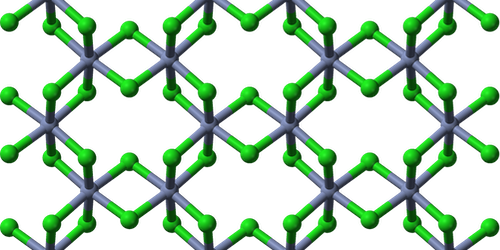Probing an Antiferromagnet with Sound
The magnetic moments of an antiferromagnet adopt a regular pattern in which neighboring moments point in opposite directions. The up-down-up-down ordering yields materials that lack net magnetism and, so it seemed, useful transport properties. Prospects for applications brightened in the 2010s with the realization that antiferromagnets exhibit anisotropic magnetoresistance, spin waves, and other spintronic behavior. Ordinarily, exploiting—or even just measuring—those effects requires sophisticated probes. Now Thomas Lyons of RIKEN in Japan and his colleagues show that they can manipulate the spin waves in one type of antiferromagnet using sound generated with standard microwave-frequency equipment [1].
In an atomic or molecular antiferromagnet, the ordering of moments is so stiff that spin waves—quantized magnetic perturbations also known as magnons—oscillate at a few hundred gigahertz. Such high frequencies preclude using surface acoustic waves to explore the rich behavior expected when an antiferromagnet’s magnons couple to its quantized lattice vibrations, or phonons. Lyons and his colleagues solved the coupling problem with a judicious choice of material: chromium trichloride (CrCl3). The crystal’s antiferromagnetism manifests in monolayers whose moments reverse direction from layer to layer. Because the layers are bound only by weak electrostatic forces, the ordering is floppy enough that the researchers could generate surface acoustic waves in the crystal using piezoelectric actuators.
The team induced two coupling modes, termed acoustic and optical, and showed that the transmission of the corresponding surface acoustic waves strongly depends on the temperature of the material and on the strength and orientation of an applied magnetic field. The team found that the coupling is sensitive to small magnetic anisotropies in CrCl3 and potentially in other antiferromagnets, a feature that could prove useful for studying the anisotropies and for exploiting them in spintronic devices.
–Charles Day
Charles Day is a Senior Editor for Physics Magazine.
References
- T. P. Lyons et al., “Acoustically driven magnon-phonon coupling in a layered antiferromagnet,” Phys. Rev. Lett. 131, 196701 (2023).




